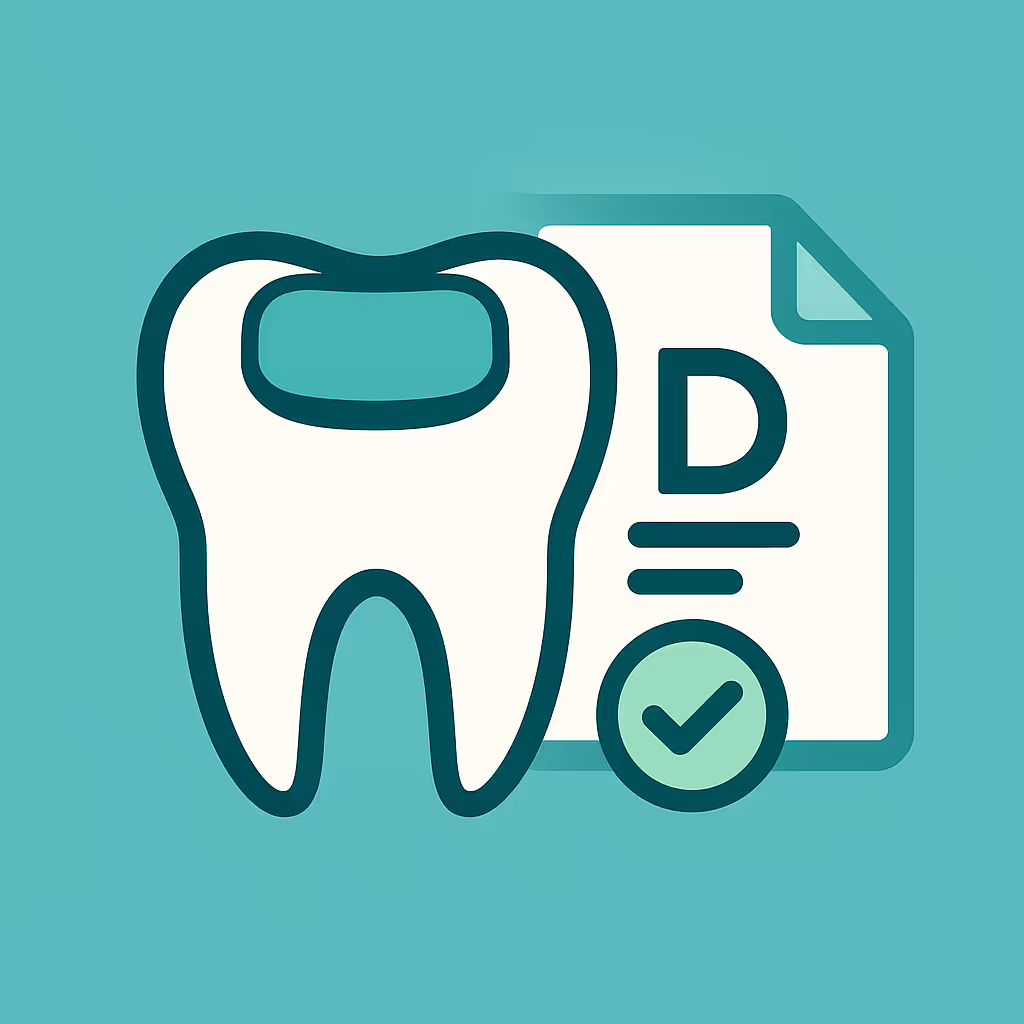Understanding Dental Code D6058
When to Use D6058 dental code
The D6058 dental code is designated for an abutment-supported porcelain or ceramic crown used in implant dentistry. This CDT code should be used when a patient receives a crown that is supported by an implant abutment, rather than a natural tooth. The crown must be made entirely of porcelain or ceramic materials. Proper use of D6058 is essential for accurate billing and claim processing, as using the wrong code can lead to claim denials or payment delays.
Documentation and Clinical Scenarios
To support the use of D6058, dental teams should ensure comprehensive documentation. This includes:
- Clinical notes describing the placement of the implant, the type of abutment, and the material of the crown.
- Radiographic evidence showing the implant and abutment in place.
- Lab invoices specifying that the crown is porcelain/ceramic and abutment-supported.
Common clinical scenarios for D6058 include patients who have completed implant placement and are ready for the final restoration with a porcelain or ceramic crown. If a different material is used, such as a metal crown, refer to the appropriate CDT code (see D6057 for a cast metal crown).
Insurance Billing Tips
Successful dental offices follow these best practices when billing D6058:
- Verify insurance coverage before treatment, as implant crowns are sometimes subject to plan exclusions or waiting periods.
- Submit pre-authorizations with detailed clinical notes and radiographs to reduce the risk of denial.
- Use precise narratives in the claim, specifying that the crown is abutment-supported and made of porcelain or ceramic.
- Attach supporting documents such as lab slips and radiographs to the initial claim submission.
- Review EOBs (Explanation of Benefits) carefully and be prepared to file a claim appeal with additional documentation if the claim is denied.
Staying proactive with insurance verification and documentation helps maintain a healthy accounts receivable (AR) and minimizes payment delays.
Example Case for D6058
Case Study: A 52-year-old patient presents with a missing upper right first molar. After successful implant placement and healing, the dentist selects a custom abutment and fabricates a porcelain crown. The clinical team documents the procedure, attaches radiographs, and submits a claim using D6058. The insurance company initially requests more information. The office quickly responds with lab invoices and a detailed narrative. The claim is approved, and payment is received within the standard AR cycle.
This example highlights the importance of thorough documentation and prompt follow-up for successful reimbursement when using the D6058 dental code.





